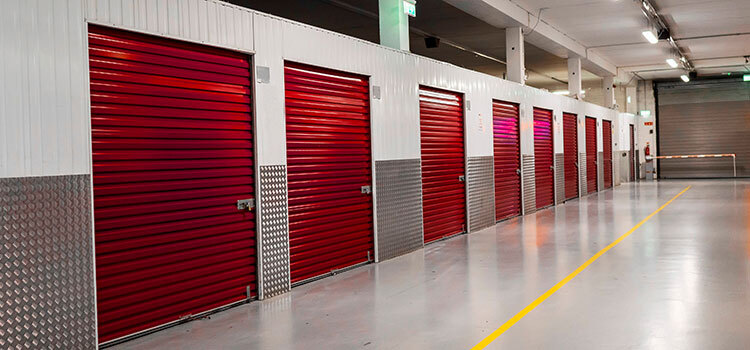
Storage units have become a go-to solution for millions of Americans dealing with moves, downsizing, or simply needing more room. With tens of thousands of facilities across the country, these convenient spaces help people keep their belongings safe without cluttering their homes. But before you find the perfect unit, it’s important to ask: how much is a storage unit, really?
This guide will break down the costs involved and the key factors that influence pricing in 2026.
So, how much is a storage unit? Prices can vary significantly based on location, size, and features. The national average monthly cost for a standard 10' x 10' storage unit hovers around $110, while a 10' x 15' unit averages about $135 per month. However, it's worth noting that prices can be much lower in certain areas. At Ankeny Mini Storage, for instance, our prices are often about 35% lower than the national average.
These figures typically represent standard units without extra amenities. Climate-controlled units, premium locations, and specialized storage will naturally cost more. Understanding the average cost of a storage unit helps you set a realistic budget and compare your local options effectively.
The size of your storage unit is one of the biggest factors determining the monthly rental cost. Here’s a look at what you can expect to pay based on common unit dimensions for 2026.
Small storage units, such as 5x5 or 5x10, are perfect for storing seasonal decorations, boxes of clothing, or holiday items. These compact spaces also work well for college students who need to store belongings over summer break or anyone looking to declutter a single room. For these smaller sizes, you can expect to pay around $50-$75 per month.
Medium storage units are the most popular choice for renters. These spaces can accommodate the contents of a one or two-bedroom apartment, including mattresses, furniture sets, and major appliances like washers and dryers. A 10x10 unit, a common medium size, is about half the size of a standard one-car garage and can hold the furniture and belongings of two full bedrooms. The average cost of a storage unit in this range is typically between $80-$120 per month.
Large storage units offer over 200 square feet of space and can hold the contents of an entire multi-bedroom house. Think of them as having an extra garage at your disposal. These units are ideal for short-term situations like moves or major home renovations, as they typically cost $150 or more per month.
Several key factors influence how much you'll pay for storage. Understanding them can help you make a smarter decision for your needs and budget.
Geography plays a major role in storage pricing. Urban areas with high population density and greater demand usually have higher rental rates due to increased real estate costs. For example, a storage unit in a major coastal city can cost significantly more than a similar-sized unit in a smaller Midwestern town. Rural and suburban areas generally offer more affordable options.
The relationship between size and cost is simple: the larger the unit, the higher the monthly rent. However, the price per square foot often decreases as the unit size increases. This can make a slightly larger unit more economical if you have a lot to store.
Different types of storage come with different price points.
Indoor units, located inside a larger building, offer more protection from the elements but may cost more. Outdoor, drive-up units provide convenience and are often larger, but they can be slightly less expensive.
Extra features and services can increase your monthly bill. These might include:
Storage demand fluctuates with the seasons, which can affect prices. Summer is often the peak season for moving, leading to higher demand and rates. You may find better deals during the winter months when fewer people are moving. However, demand for vehicle and boat storage can rise in the winter, potentially impacting prices for those specific unit types.
The length of your rental agreement can influence the price. Many facilities offer discounts for longer-term commitments, such as three months or more. While this can save you money, avoid locking into a longer term than you need, as it could end up costing you more in the long run if your plans change.
Most storage facilities require you to have insurance for your stored belongings. Your existing homeowners or renters insurance policy might provide coverage, but it's essential to check. If not, you will need to purchase a separate storage insurance policy, which typically costs between $10 and $20 per month depending on the level of coverage.
Understanding storage unit costs helps you balance your needs with your budget. Before you start your search, take stock of what you need to store and for how long. Decluttering beforehand is a great way to reduce the unit size you need, saving you money.
When you ask, "How much is a storage unit?" remember to look beyond just the monthly rate. Compare multiple facilities in your area and factor in any additional fees, insurance costs, and included amenities. Sometimes, paying a little more for better security, climate control, or convenient access is a worthwhile investment. The cheapest option isn't always the best value.
By understanding the factors that influence the average cost of a storage unit and carefully evaluating your needs, you can find a solution that fits both your requirements and your budget.